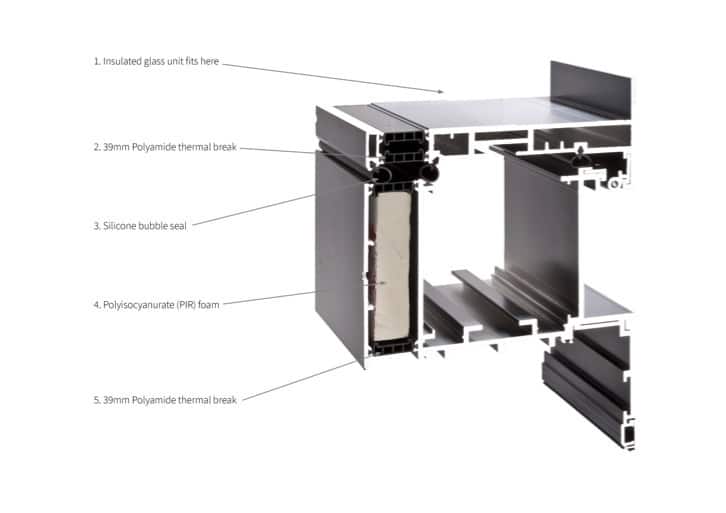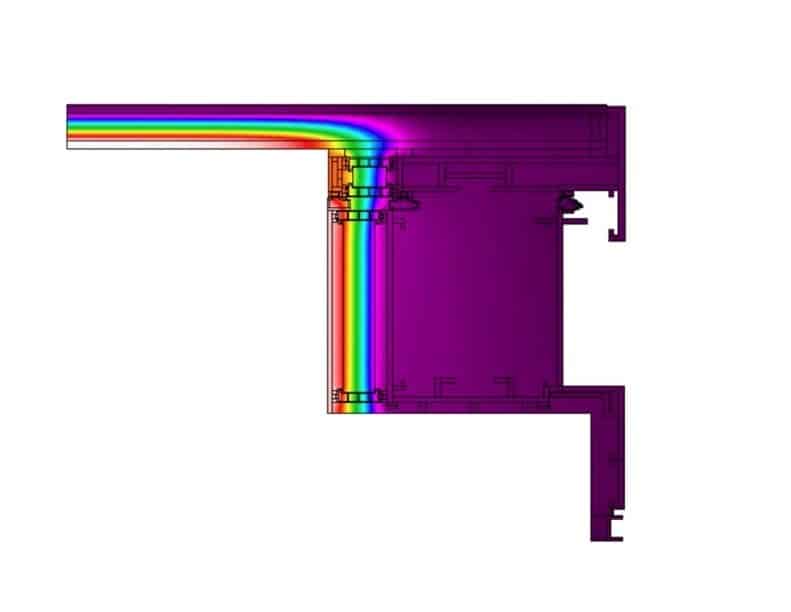Looking for off-the-shelf rooflights?
Visit our online rooflight shop, rooflights.com
Most modern contemporary rooflights are designed using lightweight aluminium or steel frames for several good reasons: They provide great weight saving and strength, and also require little to no maintenance when compared to wooden frames.
Using these types of materials does have one major disadvantage however, in that metals are extremely efficient conductors of heat, which means that during Winter you can lose heat from inside your building via direct transfer through the rooflight frame.
If the rooflight is situated over a room with high humidity, such as a kitchen or bathroom, then condensation can also form on the inside of the framework. This is due to the warm, humid air inside the building making contact with the cold surface of the metal frame, if there is no thermal break or the thermal break is poor. This is sometimes referred to as ‘cold bridging’; condensation is most likely to form where cold bridging occurs.
In order to avoid cold bridging, most reputable manufacturers have adopted the use of ‘thermal breaks’ within the design of their framework.
Thermal breaks are manufactured out of material that is very poor at conducting heat, so that when introduced into a metal frame it forms a physical barrier to stop heat being conducted through the framework. The thermal break material has to act as an insulator as well as maintain structural integrity of the frame assembly.
The example shown here is from a box section of extruded aluminium used in a large hinged access rooflight. The large cavity in the base frame is to allow the manufacturer to fit in all of the various mechanisms and electronics involved to operate the unit, thus the framework has to be fairly large. Without having thermal breaks installed it is highly likely that condensation would form on the inside of the frame due to its large surface area. 
Point 2 shows a 39mm Polyamide thermal break which is designed to be slotted directly into the aluminium extrusion and then rolled together to maintain strength, effectively separating the internal section of the metal frame from the external. In this respect the thermal break also forms part of the physical structure of the rooflight framework.
The polyamide thermal break prevents heat loss by conduction through the frame. However convection and radiation are also methods by which heat can be transferred; therefore the cavity between the two polyamide thermal breaks is filled with PIR foam insulation to prevent both radiated and convected heat transfer between the inner and outer metal profiles. This effectively maximises thermal efficiency.
Point 3 shows the use of silicone bubble seals which are used to make the frame airtight, as a poor seal between the fixed and opening elements will also contribute to heat loss from the building.
During the design process, manufacturers should be able to test the effectiveness of their designs using thermal modelling software. This demonstrates the behaviour of the rooflight and its thermal performance before incurring significant tooling costs.
The illustration below makes it very clear that the warmer surfaces in Red are kept within the confines of the building, with the darker Purple and Blue cooler areas kept outside. This is all down to the thermal breaks providing a barrier between the internal and external framework.

Read our next blog post on when not to use thermal breaks here.
For more information on the thermal performance of glass rooflights, contact the technical team or book a CPD.
Why do need this? - Additional Information
By providing this information, it allows us to forward your enquiry on to your local Technical Specification Manager and enables them to provide you with a formal quotation quicker.